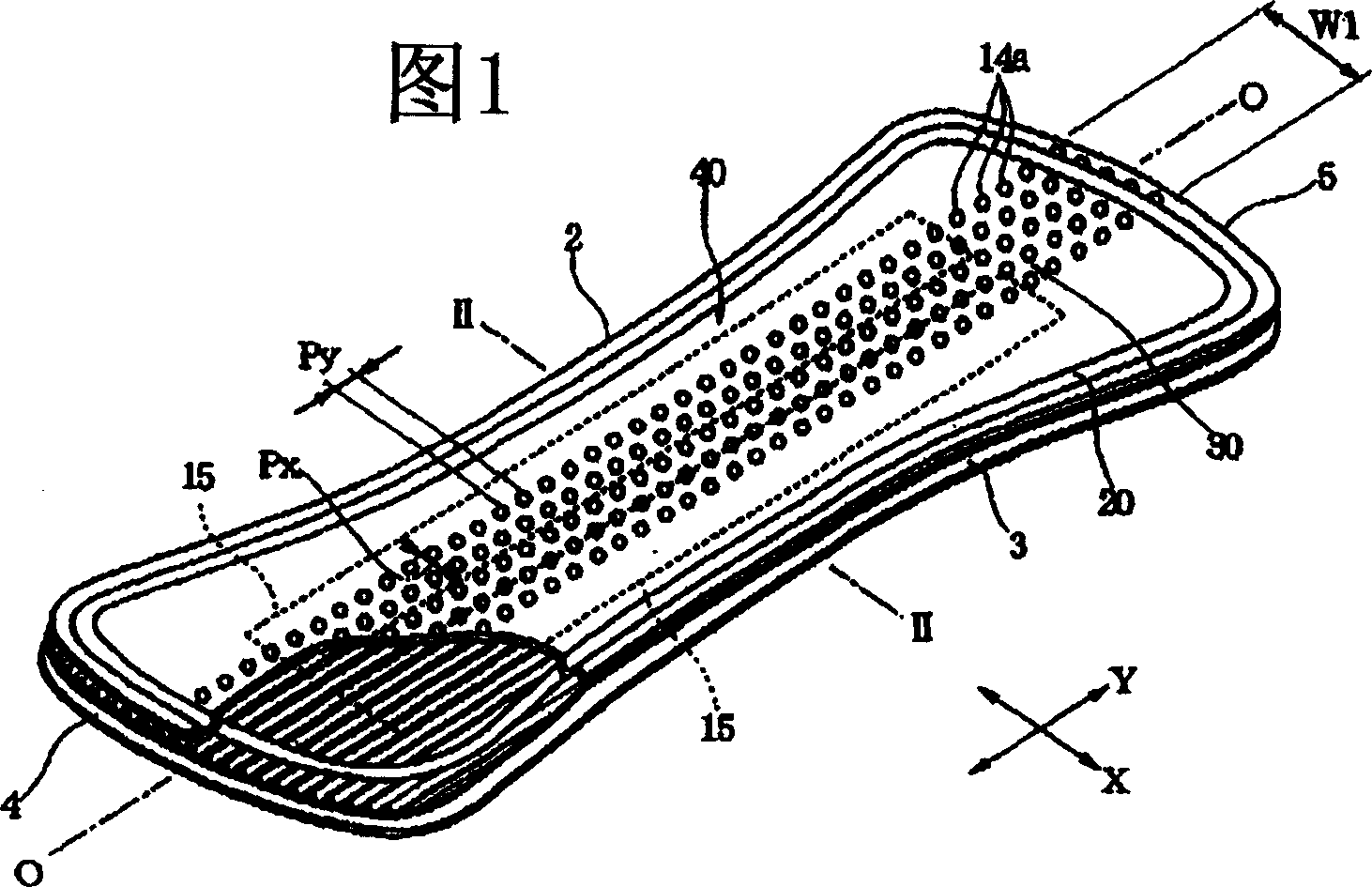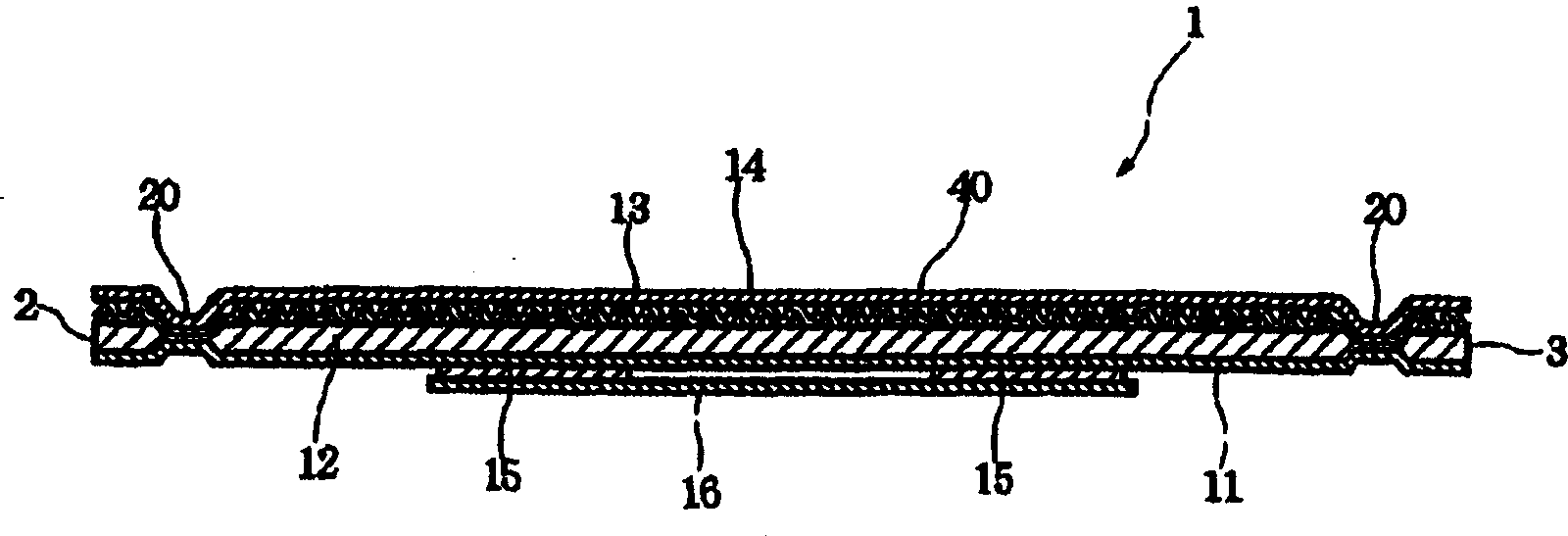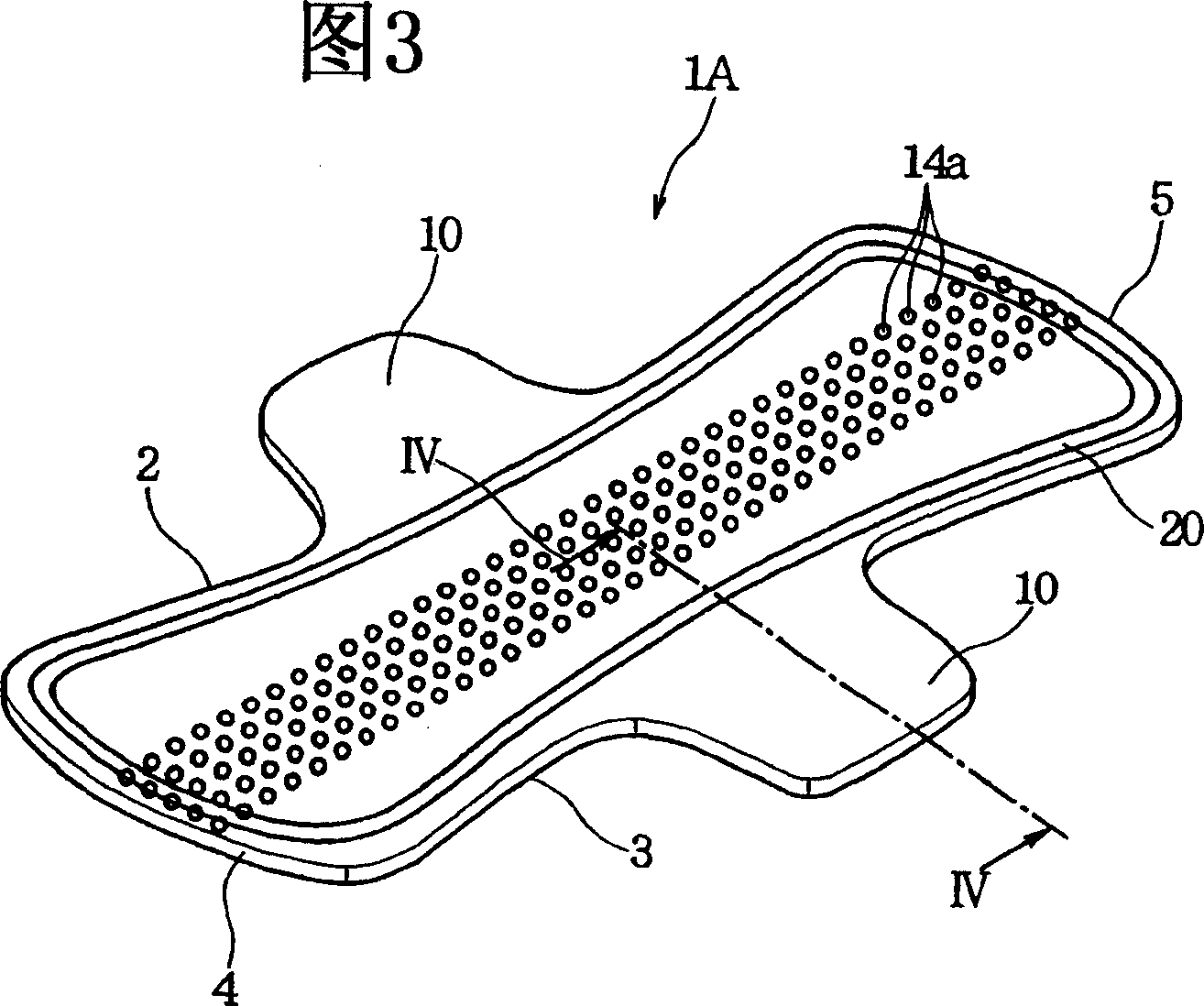Color moisture-absorbing article
A hygroscopic product, colored technology, used in absorbent pads, medical science, clothing, etc.
- Summary
- Abstract
- Description
- Claims
- Application Information
AI Technical Summary
Problems solved by technology
Method used
Image
Examples
example 1 to 11 and comparative example 1 to 5
[0102] In Examples 1 to 11 and Comparative Examples 1 to 5, as shown in Table 1, the first intermediate layer and the second intermediate layer may be selectively provided under the topsheet. Neither the topsheet, the first middle layer nor the second middle layer were processed to have roughness such as wrinkles. In addition, none of these sheets have liquid passage holes unless otherwise specified.
[0103] In Examples 1 to 11, the topsheet, the first middle layer and the second middle layer were selected from the following four spunbond nonwoven fabrics. Table 2 shows the measured hue, lightness and chroma of each spunbonded nonwoven fabric facing the body without any other thin layer placed on the undergarment surface. Here, the hue, lightness and chroma are average values of three measurements performed using a photometer "CR-300" manufactured by MINOLTA Co., Ltd.
[0104] The pink spunbond non-woven fabric is made of fibers (2.2 decitex / dtex) obtained by extruding po...
example 1
[0107] The top sheet and the first middle layer are made of pink spunbonded nonwoven fabric (basis weight: 25g / m 2 ).
[0108] For the moisture-absorbing layer, spun-bundle wet laying non-woven fabric can be used (basis weight: 38g / m 2 ), the non-woven fabric is made of 55% 1.39 decitex 44mm viscose rayon fiber, 30% 1.44 decitex 38mm polyethylene terephthalate (PET) fiber and 15% 1.67 decitex 45mm polypropylene (PP) fibers are mixed and made with water stirring / water flow interweaving (HYDROENGANGLE). Colorants of any other color than white are not used in the absorbent layer material. Viscose rayon has a natural color that does not change color when it is manufactured, but it is bleached due to the addition of inorganic fillers in PET and PP fibers. The measured hue, lightness and chroma of the absorbent layer were the same as in Examples 12 and 13. In all examples and comparative examples, the same spun non-woven fabric was used for the absorbent layer.
[0109] For neg...
example 2
[0111] The second middle layer, the first middle layer and the top sheet are made of pink spunbond non-woven fabric (basis weight: 25g / m 2 ). That is to say, pink spunbonded nonwoven fabric (basis weight: 25g / m 2 ) of three thin layers stacked on the hygroscopic layer. The measured body-facing Munsell brightness was 8.70. (Example 3)
PUM
| Property | Measurement | Unit |
|---|---|---|
| Base weigh | aaaaa | aaaaa |
| Base weigh | aaaaa | aaaaa |
Abstract
Description
Claims
Application Information
 Login to View More
Login to View More - R&D
- Intellectual Property
- Life Sciences
- Materials
- Tech Scout
- Unparalleled Data Quality
- Higher Quality Content
- 60% Fewer Hallucinations
Browse by: Latest US Patents, China's latest patents, Technical Efficacy Thesaurus, Application Domain, Technology Topic, Popular Technical Reports.
© 2025 PatSnap. All rights reserved.Legal|Privacy policy|Modern Slavery Act Transparency Statement|Sitemap|About US| Contact US: help@patsnap.com



